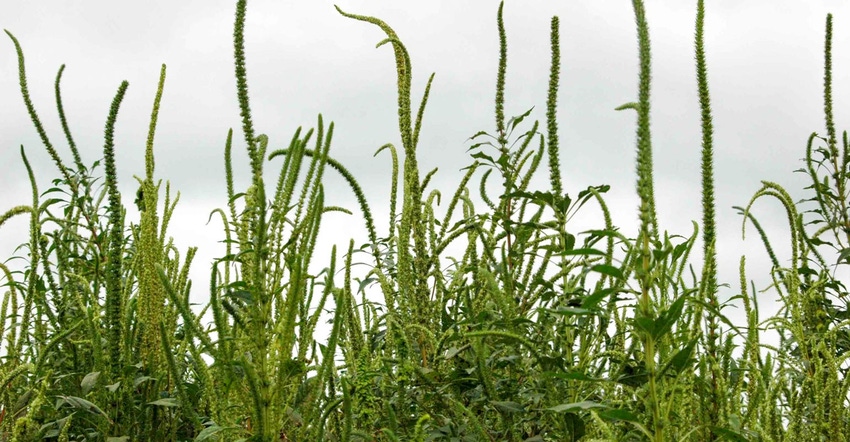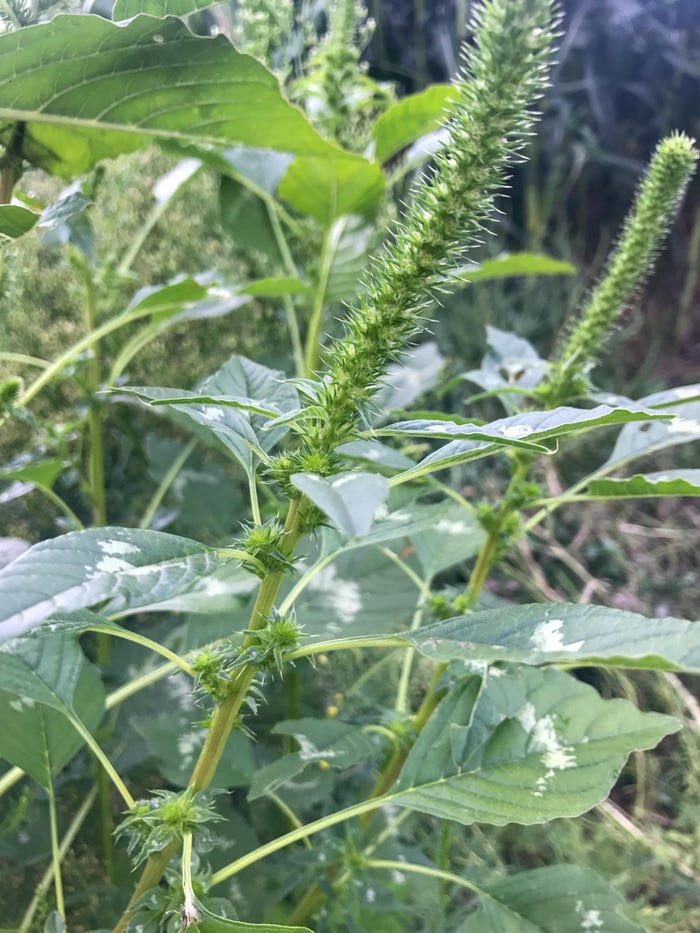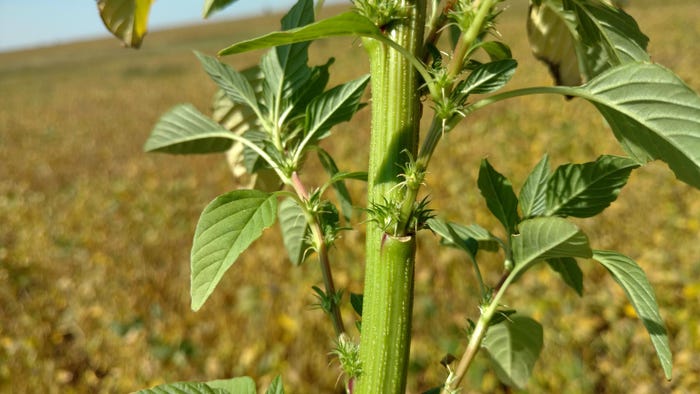
August and September are excellent months to scout for Palmer amaranth, says Tom Peters, North Dakota State University and University of Minnesota Extension sugarbeet weed specialist.
Early in the season, Palmer amaranth is difficult to distinguish from waterhemp. Many characteristics are very similar between both pigweed species.
The flowering structure — which is the most visible characteristic — appears in the late summer. The flowering structure may be 1 to 2 feet long, and mostly non-branched.
A Palmer amaranth plant is either male or female. The male flowering structure feels soft and sheds pollen, while the female flowering structure feels prickly and contains seed.
Another characteristic that identifies Palmer amaranth is the petiole length. The petiole is the stalk that joins a leaf to a stem. It is often as long or longer than the leaf blade, especially on a lower leaf.
 SEED HEAD: The seed heads of Palmer amaranth are often 2-3 feet long.
SEED HEAD: The seed heads of Palmer amaranth are often 2-3 feet long.

One of the most consistent characteristic of Palmer amaranth is the spiny bracts found on the female seed head.
Scouting tips
Jared Goplen and Lisa Behnken, University of Minnesota Extension educators, recently wrote a blog about scouting for Palmer amaranth.
A dead giveaway, they say, is that Palmer amaranth may be noticeably taller than waterhemp and other weeds in the field this time of year. It often pops up through the crop canopy in August and September.
They also say that Palmer amaranth sometimes maintains its green color slightly longer into the fall than waterhemp.
 ID CLUE: On a Palmer amaranth plant, the petioles, which connect leaves to the stems, are often as long or longer than the leaf.
ID CLUE: On a Palmer amaranth plant, the petioles, which connect leaves to the stems, are often as long or longer than the leaf.

When scouting for Palmer amaranth, pay close attention to areas where weed escapes are most likely, such as the end rows where sprayer booms may not have been fully loaded with chemical when spraying started.
Also check fields seeded with native plantings or cover crops, especially when the seed was produced in southern states where Palmer amaranth is more common.
Manured fields may contain Palmer amaranth, too, if the feed fed to the animals that produced the manure included purchased hay, cottonseed or sunflower screenings. They may have been contaminated with Palmer amaranth seed.
What to do
Herbicides are not effective on Palmer amaranth in late summer and fall.
If there are only a few escapes pull, bag and burn them so you don’t spread the seed. Mow larger patches before they go seed. Combine crop in Palmer amaranth patches last and clean the combine so you don’t spread the seed.
The South Dakota State University Extension Service has a good Palmer amaranth identification and control guide available online.
 SURE SIGN: Female Palmer amaranth plants have a spiny bracts on the seed head, while waterhemp plants do not.
SURE SIGN: Female Palmer amaranth plants have a spiny bracts on the seed head, while waterhemp plants do not.

If you find Palmer amaranth or discover a pigweed that doesn’t look like the others that you are familiar with, contact your county Extension agent, area Extension agent or a state Extension specialist.
Read more about:
Palmer AmaranthAbout the Author(s)
You May Also Like






